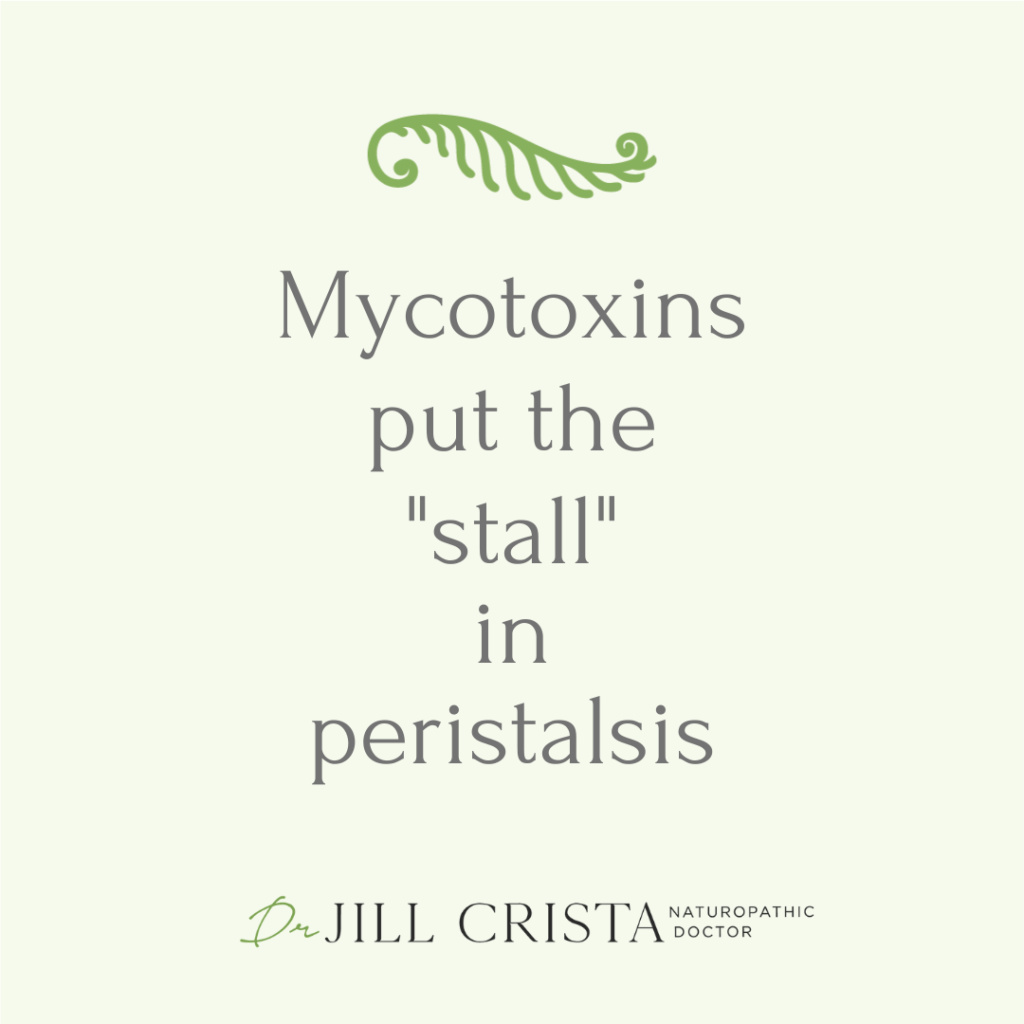What Is Peristalsis And How Mold Affects It


How does the food you eat move down through your digestive tubes even if you’re upside down?🤸🏽♂️
Peristalsis!
Peristalsis is the organized, synchronous muscle contractions that squeeze food through the intestines to be digested.
When working right, the gut tells the brain:
– where the food is,
– what phase of digestion it’s in,
– and when the food needs to move to the next phase
Then the brain tells the nerves in the gut:
– to squeeze,
– how far to squeeze,
– and for how long
It’s all very complicated, but thankfully we don’t have to direct this. It happens automatically…or at least it should.
But with mold, it often doesn’t. Mycotoxins slow, interrupt, and stagnate digestion by blocking many of the steps above. They put the “stall” in peristalsis.⏳
This can lead to bloating, gas, reflux, poor digestion, putrefaction, and gastroparesis, or slowed stomach emptying. We commonly see Small Intestinal Bacterial Overgrowth (SIBO) develop in people with mold exposure because of this stalling effect.
My favorite things to get gut traffic moving again?
– Taking time to smell and taste your food
– Bitters just before meals
– Sweet Flag Herb, which fittingly loves to grow in mucky shallows
– And Melatonin
Huh? Melatonin? This one surprises people.
Melatonin is actually an effective and gentle “pro-kinetic”, meaning it helps encourage peristalsis. It does so in a brain- and nerve-restorative way, not in a crampy way. As I write in my book, melatonin is the single most powerful brain antioxidant against mold and mycotoxins. It helps “mold-brain”, and assists your brain’s role in digestion. It also protects the liver and kidneys from the damaging effects of mycotoxins. And of course, melatonin helps with sleep induction. Melatonin at night helps you digest in the day.
Get those digestive engines moving again so you can break the mold and take back your health.
This content is health information and not intended as personal medical advice. Viewing will not establish a doctor-patient relationship. It is not intended to diagnose, treat, cure or prevent any disease or medical condition. The information discussed is not intended to replace the advice of your healthcare provider. Reliance on information provided by Dr. Jill Crista, employees, or others appearing at the invitation of Dr. Crista is solely at your own risk.
